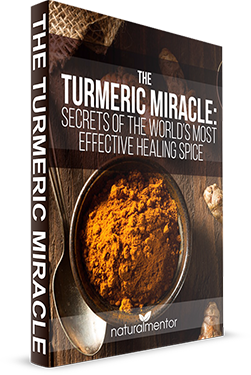How to Avoid the Toxicity of Everyday Products

It’s been a little while since we wrote about the toxins of modern living. Meanwhile, the world certainly isn’t getting any less toxic—our homes and belongings, the air we breathe, and the products we buy still pose potential risks to our health and well-being.
In past articles, we’ve outlined the dangerous toxins in a wide variety of everyday products, including clothing, cookware, cosmetics, deodorants, moisturizers, furniture, cleaning products, toothpaste, and more. We’ve warned you about endocrine disruptors, toxic plastics and microbeads, and the tens of thousands of other toxic industrial chemicals with which modern life is saturated.
Let’s review some of the worst offenders (and how to avoid them). Thank you to Parasolfor providing this excellent infographic!

Pesticides. We’ve written about the horrors of pesticides before. A staggering portion of the planet is now contaminated with glyphosate-containing pesticides like RoundUp, neonicotinoids, and other chemical concoctions that wreak havoc on the health of both the human body and the environment.[1]
Despite manufacturer assurances that there’s nothing harmful about pesticides, mounting evidence links pesticide contamination with cancer and a variety of other health problems, as well as collapsing bee colony populations.[2]
Pesticides are so prevalent that it can be difficult to avoid them—but you can minimize your exposure by always eating organic (you should especially avoid the “Dirty Dozen,”which are known to be the most highly pesticide-contaminated produce).
Conventional cotton. Unfortunately, it’s not just food you need to be worried about when it comes to pesticide contamination. Cotton is one of the most pesticide-contaminated crops in the world—this means that these toxins end up in clothing made from conventional cotton, and are readily absorbed through the skin. And to make matters worse, some clothing has even been found to contain chlorine bleach, formaldehyde (that’s right, carcinogenic embalming fluid), and toxic plastics like perfluorinated chemicals (PFCs).[3]
Once again, you can easily protect yourself by choosing clothing made with organic cotton and natural materials such as hemp, bamboo, cork, and wool. Also, avoid “wrinkle-free” clothing like the plague, as it’s been shown to contain even higher levels of toxic PFCs and formaldehyde.
Diapers and toxic toys. It’s especially tragic that even baby-care products can be terribly toxic (and babies are more developmentally sensitive to toxin exposure than adults, so it’s imperative that you take steps to keeps industrial toxins away from your children).
Conventional disposable diapers contain irritating, toxic dyes, heavy metals, and volatile organic compounds (VOCs) such as xylene, ethylbenzene, toluene, and dipentene. These chemicals not only cause painful diaper rashes for your baby, but are also linked with cancer, developmental issues, and other worrying health problems.[4]Similarly, many cheaply made children’s toys contain brominated flame retardants (BFRs), arsenic, and other heavy-duty toxins that are bioaccumulative (which means they cumulatively build up in bone and tissue and cause various long-term health issues).
Luckily, there are plenty of conscious companies that now offer both reusable and disposable diapers made from safe and organic materials, as well as non-toxic toys.
Cleaning products. The vast majority of cleaning products are anything but clean—they’re filled with a vast array of corrosive and health-sapping chemicals. And in the vast majority of cases, these powerful toxins are not even necessary for keeping your house clean; there are plenty of food-safe materials that work just as well, such as vinegar, orange oil, and baking soda.
Check out this article for tips on making your own safe and effective cleaning products from common household ingredients. It’s way easier than you might think, but even if you’re not the DIY type, there are plenty of safe and eco-friendly cleaning products available for purchase (just make sure you check the ingredients before buying anything).
Beauty care products. The proliferation of toxic chemicals in nearly all beauty care products is a huge problem. Toxins are easily absorbed through the skin each and every time we use such products—yet because toxic bioaccumulation only causes health problems after a long period of time, manufacturers continue to get away with denying the dangers of their products.
Conventional make-up, shampoos and conditioners, moisturizers, lipstick, deodorants, and nearly every other common hygiene and beauty product are contaminated to some degree, so take great care in choosing which ones to purchase. You can even make your own beauty care products, cheaply and easily. In this article, we explain how you can replace a sizable portion of your beauty product repertoire with nothing but coconut oil.
Why it’s worth it to stay vigilant
It may seem overwhelming to have to think about all of these potential toxin sources—but it’s well worth the effort. The toxins in these products slowly (or not so slowly) undermine your health; the constant process of fending off toxins makes it dramatically more difficult for your body to resist disease and imbalance.
But by making a simple shift toward conscious, organic, chemical-free product brands (and by making your own self-care and home-care products whenever possible), you can give your body the helping hand it needs to stay strong, vibrant, and toxin-free.
References
[4] http://pediatrics.aappublications.org/content/116/3/e450.full?sid=a13491bc-4318-4181-940b-d3d406ec7427


